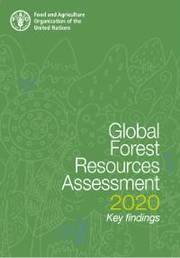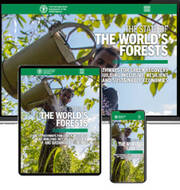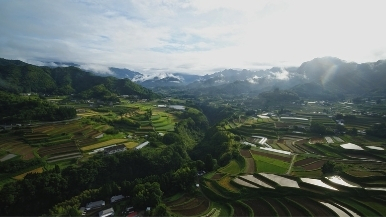Global Forest Resources Assessments
Forests have immense potential to support sustainable development pathways, and the key to realizing this is reliable data and evidence. Accurate data on forest resources is needed to monitor progress towards targets of the Sustainable Development Goals (SDG). It is also needed to monitor progress on the Global Forest Goals and Targets of the United Nations Strategic Plan for Forests 2017–2030, the nationally determined contributions of countries under the Paris Agreement on climate change as well as globally agreed biodiversity targets, including of the forthcoming post-2020 global biodiversity framework.
FAO completed its first assessment of the world’s forest resources in 1948. Since then, the Global Forest Resources Assessment (FRA) has evolved into a comprehensive evaluation of forest resources and their condition, management and uses, covering all the thematic elements of sustainable forest management.
The Global Forest Resources Assessment 2020 (FRA 2020), the latest of these assessments, examines the status of, and trends in, more than 60 forest-related variables in 236 countries and territories in the period 1990–2020. It presents a comprehensive view of the world’s forests and the ways in which the resource and its use is changing.
FRA is the mechanism for collecting data on two forest-related indicators of the SDGs and reporting on SDG 15 – “Life on land”.
Since 1990, FRA has used remote sensing to complement the information collected through its country reporting process to derive independent regional and global estimates of forest area and its changes. FAO works closely with many developing countries to develop capacity in the use of the latest remote sensing data and products.
Visit www.fao.org/forest-resources-assessment for more information.
The State of the World’s Forests
Countries have committed to achieving the 2030 Agenda for Sustainable Development, including the 17 Sustainable Development Goals (SDGs), as part of their efforts to tackle complex challenges such as ending poverty and hunger, responding to climate change, building resilient communities, achieving inclusive growth and sustainably managing the Earth’s natural resources. The State of the World’s Forests, a biannual FAO publication, analyses the roles of forests and trees – and the people who use and manage them – in achieving the SDGs and other globally significant aspirations.
National forest monitoring
FAO supports member countries in all aspects of forest monitoring (e.g. national forest inventories, satellite land monitoring systems, and reporting under the United Nations Framework Convention on Climate Change) to provide reliable information for national forest policy development, planning and sustainable management and to satisfy international reporting requirements. FAO also developed and maintains the Open Foris and SEPAL platforms, which are used for various aspects of forest monitoring in more than 160 countries. This includes support to countries on technical issues related to NFM systems, the development of cost-effective and reliable measurement, reporting and verification processes for REDD+, the development of peatland monitoring systems, and indicators for the Sustainable Development Goals.
Highlights
Forest product statistics
FAO has been collecting and publishing annual statistics on the production and trade of forest products since 1947. As of 2018, these statistics covered 59 types of forest products in 24 product groups (e.g. roundwood, sawnwood, wood-based panels, and pulp and paper) for the world’s 245 countries and territories. Forest product statistics at FAO are constantly evolving. In 2019, for example, the first-ever global dataset was released on the collection and trade of post-consumer recovered wood, including re-usable wood from construction and packaging. FAO collects forest product statistics annually from national correspondents in collaboration with the International Tropical Timber Organization, Eurostat and the United Nations Economic Commission for Europe. The findings are disseminated in the Yearbook of Forest Products and as part of FAOSTAT, which is FAO’s global database on food and agriculture.
FAO, in cooperation with global partners, hosts regional workshops to support forest statisticians in member countries in developing statistical systems, improving methods and reporting accurate, up-to-date information. In addition, FAO publishes documentation to improve the quality and consistency of global data on forest products. This work includes guidelines for incorporating woodfuel data into ongoing surveys, guidelines for collecting data on forest products, and summaries of forest product conversion factors used in various member countries.
REDD+
Reducing emissions from deforestation and forest degradation, plus the sustainable management of forests and the conservation and enhancement of forest carbon stocks, known collectively as REDD+, are essential for global efforts to mitigate climate change. FAO supports developing countries in their REDD+ processes and in turning their political commitments – as represented by nationally determined contributions under the Paris Agreement on climate change – into action on the ground.
FAO helps countries identify and collect data on relevant activities related to land use and land-use change, forestry and REDD+. For example, spatial data on deforestation, afforestation and reforestation are typically collected using remote sensing (satellites), with changes monitored using a satellite land monitoring system.






